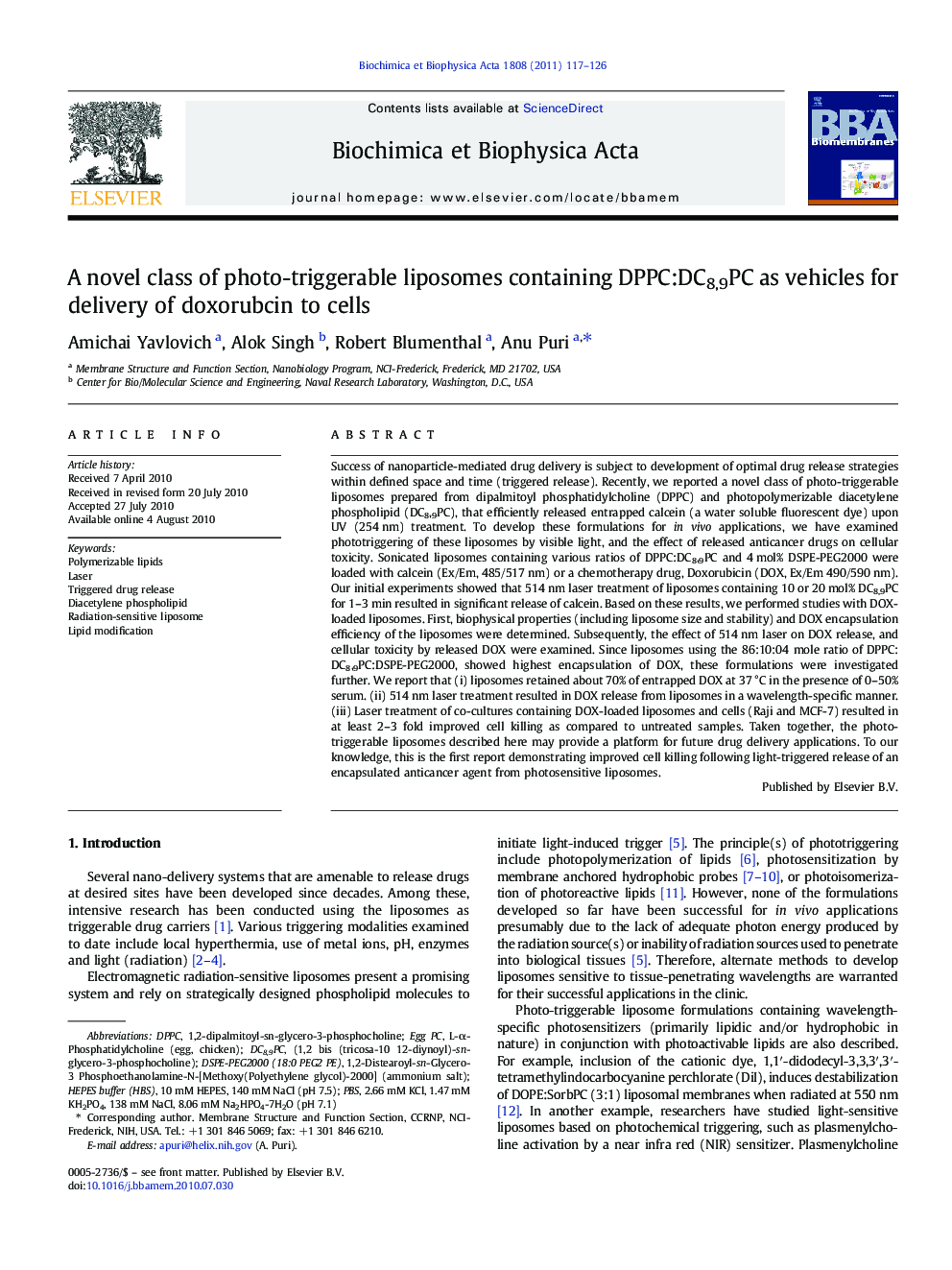| Article ID | Journal | Published Year | Pages | File Type |
|---|---|---|---|---|
| 10797981 | Biochimica et Biophysica Acta (BBA) - Biomembranes | 2011 | 10 Pages |
Abstract
Success of nanoparticle-mediated drug delivery is subject to development of optimal drug release strategies within defined space and time (triggered release). Recently, we reported a novel class of photo-triggerable liposomes prepared from dipalmitoyl phosphatidylcholine (DPPC) and photopolymerizable diacetylene phospholipid (DC8,9PC), that efficiently released entrapped calcein (a water soluble fluorescent dye) upon UV (254 nm) treatment. To develop these formulations for in vivo applications, we have examined phototriggering of these liposomes by visible light, and the effect of released anticancer drugs on cellular toxicity. Sonicated liposomes containing various ratios of DPPC:DC8,9PC and 4 mol% DSPE-PEG2000 were loaded with calcein (Ex/Em, 485/517 nm) or a chemotherapy drug, Doxorubicin (DOX, Ex/Em 490/590 nm). Our initial experiments showed that 514 nm laser treatment of liposomes containing 10 or 20 mol% DC8,9PC for 1-3 min resulted in significant release of calcein. Based on these results, we performed studies with DOX-loaded liposomes. First, biophysical properties (including liposome size and stability) and DOX encapsulation efficiency of the liposomes were determined. Subsequently, the effect of 514 nm laser on DOX release, and cellular toxicity by released DOX were examined. Since liposomes using the 86:10:04 mole ratio of DPPC:DC8,9PC:DSPE-PEG2000, showed highest encapsulation of DOX, these formulations were investigated further. We report that (i) liposomes retained about 70% of entrapped DOX at 37 °C in the presence of 0-50% serum. (ii) 514 nm laser treatment resulted in DOX release from liposomes in a wavelength-specific manner. (iii) Laser treatment of co-cultures containing DOX-loaded liposomes and cells (Raji and MCF-7) resulted in at least 2-3 fold improved cell killing as compared to untreated samples. Taken together, the photo-triggerable liposomes described here may provide a platform for future drug delivery applications. To our knowledge, this is the first report demonstrating improved cell killing following light-triggered release of an encapsulated anticancer agent from photosensitive liposomes.
Keywords
Related Topics
Life Sciences
Biochemistry, Genetics and Molecular Biology
Biochemistry
Authors
Amichai Yavlovich, Alok Singh, Robert Blumenthal, Anu Puri,
